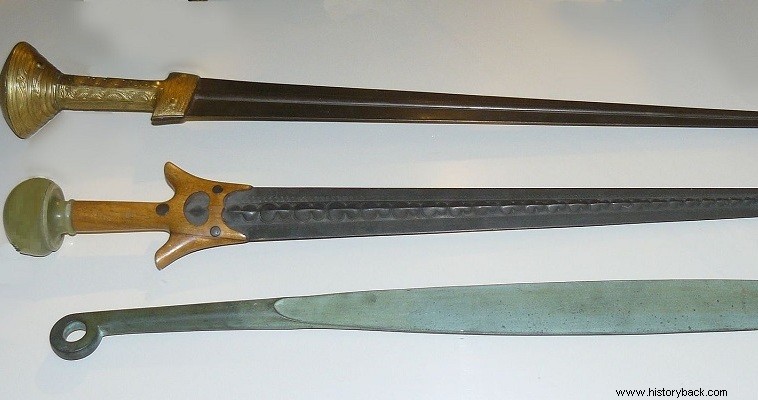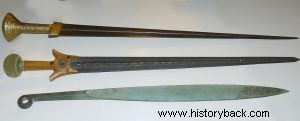
The Greeks throughout their history have proven to be brilliant warriors. Not only could the Mycenaean ancestors not be an exception, but they were the ones who set the heroic ideal that nurtured so many generations of Greeks.
Alexander, Makrygiannis, Kolokotronis and so many other leading figures of Greek history were deeply imbued with the heroic threads of the Achaean heroes, as the blind poet sang them. Inseparable companions of the Mycenaean heroes were their weapons.
These accompanied them during their lives, these also accompanied them in their memoirs. And fortunately, because this is how they reached our days, preserved in the arms of the Greek land for centuries, giving us excellent information about their owners.
The sword has always been an extension of the warrior self. It reflected his pride. It was synonymous with his dexterity. In Greece, swords were developed early, from the depths of history. Since at least Minoan times, their basic shape has remained unchanged, despite any occasional morphological differences.
Excluding manuals, swords of the Mycenaean period can be categorized into two main categories, according to their length. Longswords ranged in length from 60 centimeters to almost a meter, while shorter swords ranged in length from 50 to 70 centimeters. The long swords had a lance-shaped edge and were capable of both crushing and night blows. Their large size poses an inexplicable problem for researchers.
Such a large and consequently heavy weapon, which the warrior handled with only one hand - the handles that have been found lead us to this conclusion - was inherently unwieldy. Handling it required special physical strength, but also dexterity. Like all metal parts of Mycenaean weapons, they were made of brass, a mixture of copper and tin - about 90% copper and 10% tin.
All had a central rib, transverse to their vertical axis, which improved the weapon's resistance to impact with hard objects - in sword fighting. Some scholars argue that longswords were primarily used as night weapons, due to their increased piercing ability against lightly armored or unarmored opponents due to their shape. It seems that it was able to penetrate, under certain conditions, even large feet or even eight-shaped shields.
However, long swords do not seem to have been the favorite weapons of the Mycenaean infantry, who were usually armed with similar models, but of shorter length (such a sword is carried by an Achaean infantryman, who is depicted dueling a barbarian warrior, in a fresco of the so-called palace of Nestora, at the top of Pylos).
In contrast, a tomb stele from Tomb A of Mycenae, which is now in the National Archaeological Museum, depicts a charioteer with a long sword belted around his waist. It is only natural that longswords are most useful to mounted warriors. Their long length allowed the mounted fighter, whether he was a horseman or a charioteer, to easily hit opponents on foot, without having to stoop, becoming a target himself. With the speed of movement of the horse or chariot, a skillful strike with the longsword was enough to neutralize the opposing warrior.
Against armor, however, this particular weapon should not have been as effective, which is why it was replaced relatively quickly. With its weight unevenly distributed, it was unable to land powerful crushing blows on a heavily armored opponent. It might be able to pierce the opponent's chest, but there was a danger that its point would break in the attempt. However, the Mycenaean warrior in almost every case also carried a handbook, the shape of which allowed him to "tear" even chests.
The next example of Mycenaean swords, which we do not know exactly when it entered service, was of shorter length. Its blade was sometimes wider at the point. Usually, however, the entire blade was the same thickness. These swords were easier to use and, above all, they were capable of delivering a deadly crushing blow, without losing their piercing ability. Broad-bladed swords, having their center of gravity in front, functioned like the kopides of classical times.
The Iliad gives us shocking descriptions of the use of swords by the Mycenaean warriors, "...he plunged his sword into his skin, and the skin poured out, the black body flooded..." (Y, 469-470, mtf N.Kazantzakis-I.TH.Kakridis) and "...he hit him with the sword on the neck and then his head flew off, and his mind was thrown out of the slings..." (Y, 481-483 mtf. N .Kazantzakis-I.TH. Kakridis) and "...he hit the other one in the key with his sword, on the side of the shoulder, and severed his neck and back" (E, 146-147, mtf. N. Kazantzakis-I. Th. Kakridis).

Representation of Mycenaean long swords and spear.
